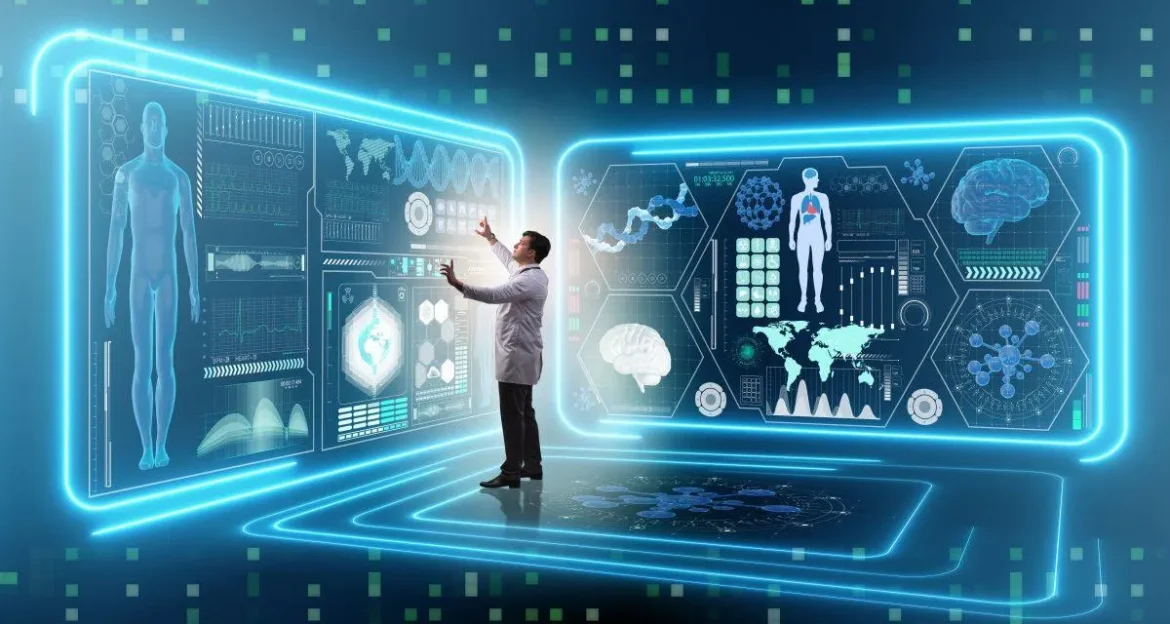Table of Contents
This article delves into the complexities of AI, exploring its impact on modern life and industries, and the intricacies of mastering this fascinating field.
1. Understanding the Fundamentals of AI
Artificial intelligence (AI) is the simulation of human intelligence processes by machines, focusing on learning, reasoning, and self-correction. It has two branches: Narrow AI, designed for specific tasks, and General AI, with generalized cognitive abilities. Understanding AI requires active experimentation and innovation, as most applications are rooted in Narrow AI.
2. The Evolution of AI: A Historical Perspective
AI, a technology that has evolved significantly since the 1950s, has experienced a series of ‘boom and bust’ cycles. The first AI conference was organized in 1956 by John McCarthy, who coined the term and organized the first AI conference. The 21st century has seen a resurgence of AI due to advances in machine learning, increased computational resources, and massive data availability, making it an integral part of various sectors, including healthcare, finance, and entertainment.
3. Machine Learning: The Heart of Modern AI
Machine learning (ML), a subset of AI, is pivotal in most contemporary applications. It empowers systems to learn and improve from experience without explicit programming. ML algorithms build a model based on sample data, known as “training data,” to make predictions or decisions. Supervised learning, unsupervised learning, and reinforcement learning are its three primary types. Supervised learning involves training a model on labeled data; unsupervised learning deals with unlabelled data and looks for hidden patterns; reinforcement learning is about agents learning to make sequences of decisions by receiving rewards. One of the most revolutionary advancements in ML is the development of deep learning, which uses neural networks with many layers (hence “deep”) to analyze various forms of data. Companies like Google and Tesla use these technologies to develop advanced solutions, such as voice recognition systems and self-driving cars, respectively.
4. Neural Networks and Deep Learning: Going Beyond the Basics
Neural networks, inspired by the human brain’s architecture, are at the core of deep learning. These networks consist of interconnected units or “neurons” that process data in layers. The first layer, known as the input layer, receives the raw data. Successive layers, called hidden layers, process these inputs through various transformations, while the final layer, the output layer, produces the result. Deep learning models, due to their multiple hidden layers, can capture intricate patterns and representations in extensive datasets. Convolutional neural networks (CNNs) specialize in analyzing visual imagery, while recurrent neural networks (RNNs) excel in processing sequential data, like language. The ability of neural networks to uncover complex patterns has led to breakthroughs in areas such as natural language processing and computer vision, making them indispensable tools in the quest for AI mastery.
5. Ethical Considerations in AI Development
The rapid pace of AI development brings forth significant ethical considerations. AI systems can inadvertently perpetuate biases present in their training data, leading to skewed outcomes and unfair practices. For instance, facial recognition technology has been criticized for displaying racial bias, posing serious implications for privacy and civil liberties. Another ethical concern is the transparency and accountability of AI decisions. As AI systems become more autonomous, understanding the decision-making process — often referred to as “algorithmic transparency” — becomes crucial. The privacy of data, particularly personal and sensitive information, is also a pressing issue with the proliferation of AI technologies. Addressing these ethical challenges involves implementing robust regulatory frameworks, fostering transparency, ensuring diverse and unbiased training data, and promoting interdisciplinary collaboration to guide responsible AI development.
6. Real-World Applications of AI
AI’s transformative impact is visible across numerous sectors. In healthcare, AI algorithms assist in diagnosing diseases with higher accuracy by analyzing medical images and patient data. IBM Watson Health is a prime example, leveraging AI to provide personalized treatment plans. In finance, AI helps detect fraudulent activities, optimize trading strategies, and offer personalized banking services. Autonomous vehicles, another hallmark of AI innovation, are revolutionizing the transportation industry, with companies like Tesla and Waymo at the forefront. Additionally, AI-powered recommendation systems, like those used by Netflix and Amazon, enhance user experience by providing customized content and product suggestions. AI’s applicability in predictive maintenance ensures efficient operations in manufacturing and energy sectors. These real-world applications underscore AI’s potential to drive efficiency, innovation, and personalized experiences.
7. The Future of AI: Challenges and Opportunities
Looking ahead, AI presents both remarkable opportunities and complex challenges. One of the significant opportunities lies in developing more sophisticated and general AI systems that can perform a broad range of tasks with human-like understanding. However, achieving this level of AI mastery necessitates overcoming challenges like developing more advanced algorithms that require fewer data and less computational power. Ensuring the safe and ethical deployment of AI will also be paramount, demanding adherence to stringent guidelines and continuous monitoring. Another challenge is addressing the potential job displacement caused by AI automation. Preparing the workforce for this shift through education and reskilling programs will be essential. The future of AI holds immense promise, from revolutionizing healthcare and education to advancing scientific research, contingent on responsible and innovative approaches to harness its full potential.



